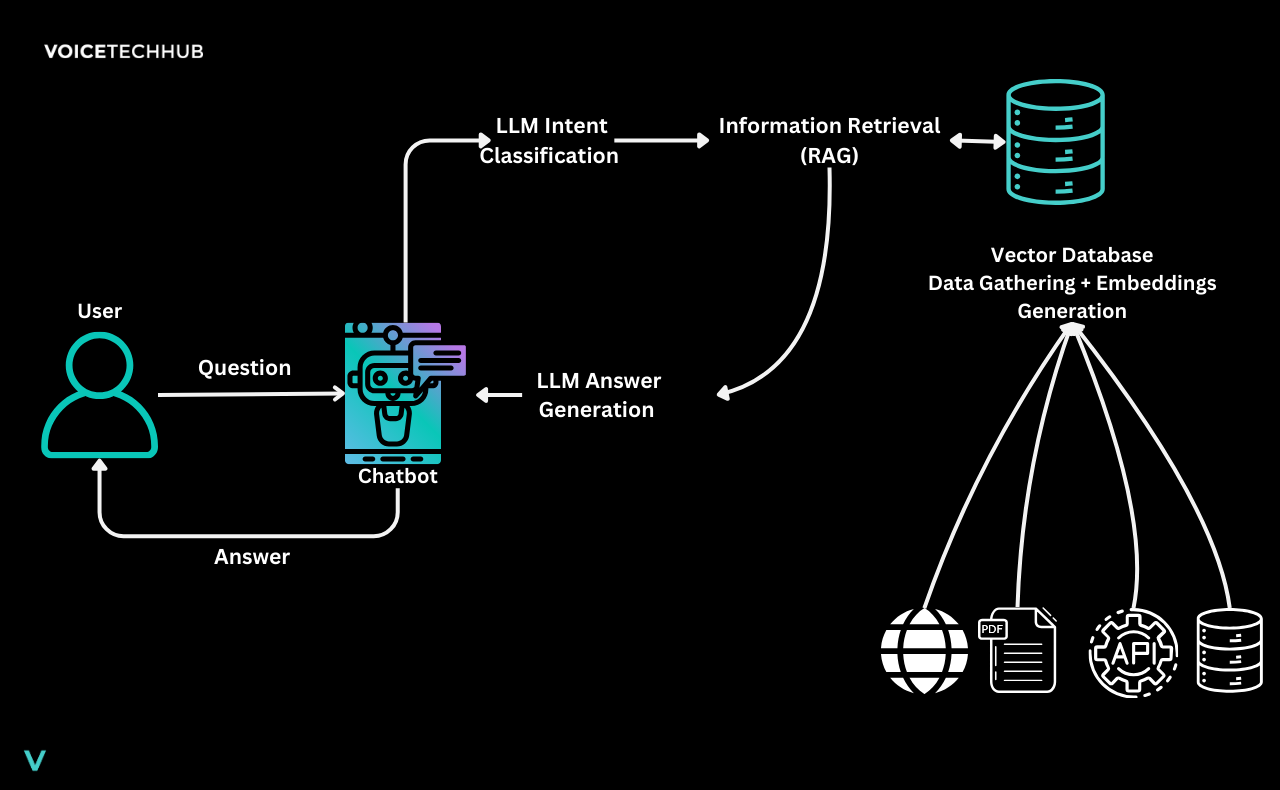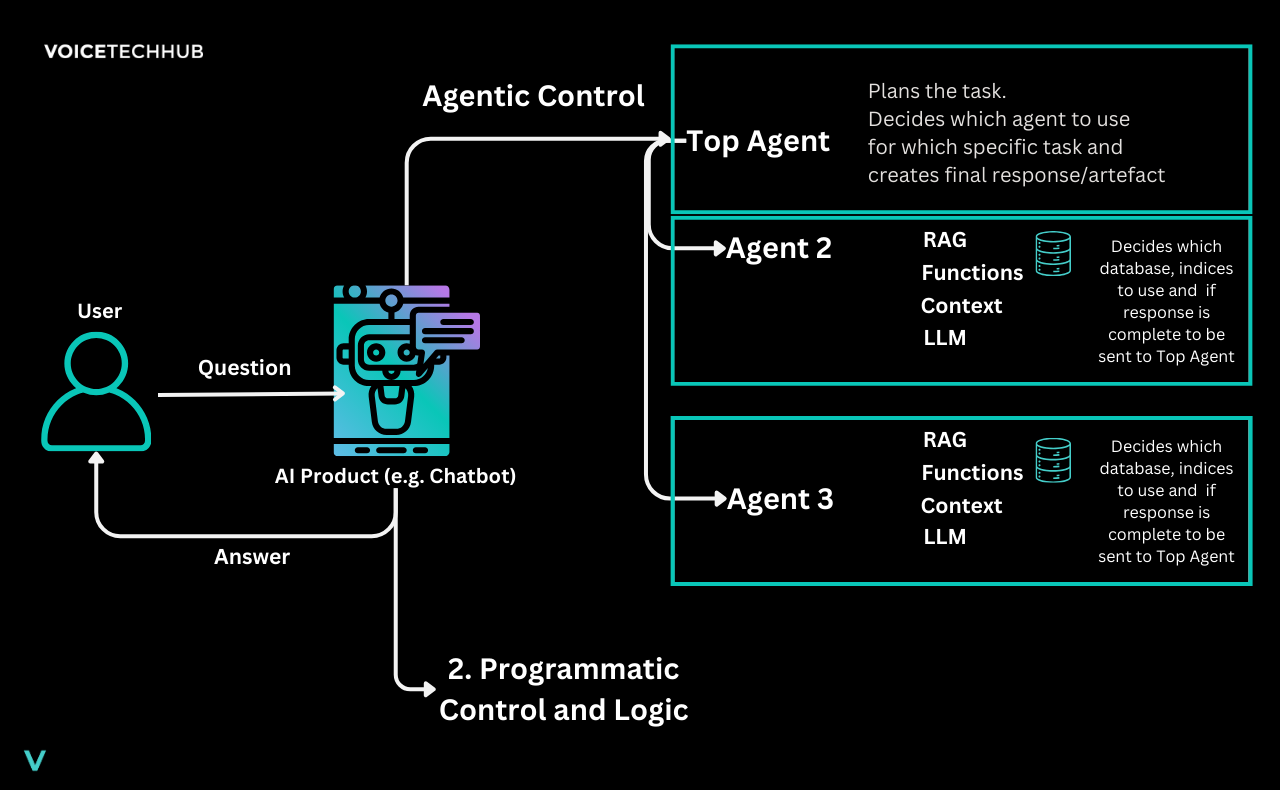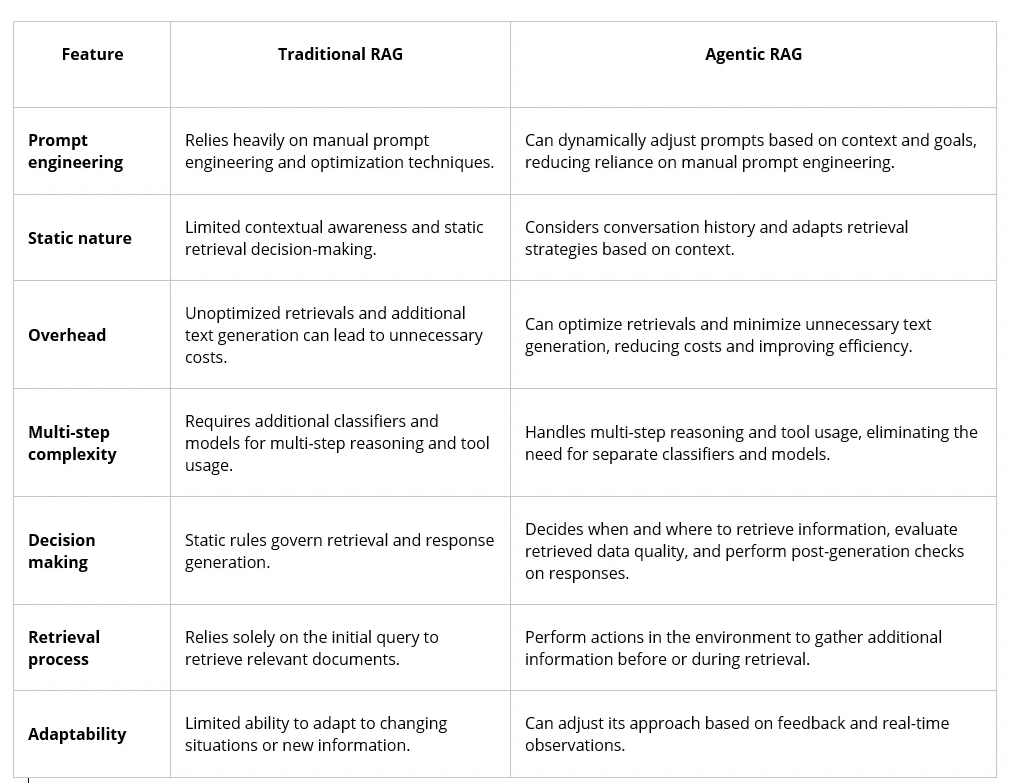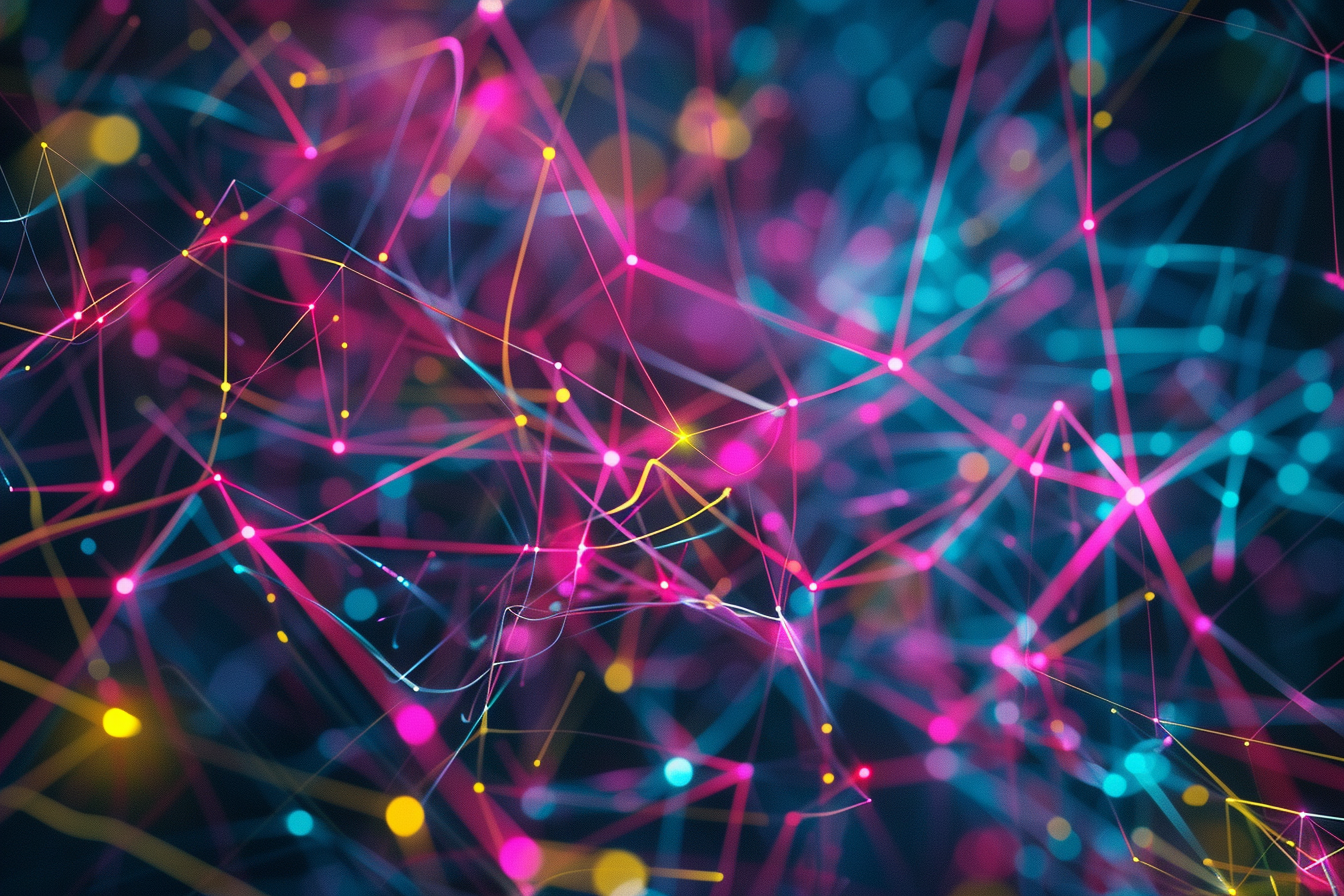Understanding Agentic AI: A Game-Changer for the Future of AI
Agentic AI: A Simple Guide
What is Agentic AI?
Agentic AI represents a sophisticated class of artificial intelligence systems designed to function as autonomous agents. It is when we put LLM in charge of the logic and RAG. They h
1) Agents come up with a plan
2) Agents use tools like calculators or a certain code or other language model, APIs
3) Agents can access memory: They can think through a problem and this thinking and history can be stored and retrieved.
These systems can perform tasks, make decisions, and interact with their environments independently, without the need for direct human intervention.
Unlike traditional AI models that follow predefined rules or Generative AI that focuses on creating new content, Agentic AI emphasizes goal-oriented behavior and adaptive decision-making. These systems utilize advanced algorithms and sensory inputs to execute actions in real-time, learning and optimizing their performance through continuous feedback. Applications of Agentic AI are diverse, ranging from robotics and autonomous vehicles to intelligent personal assistants and complex simulation environments.
How do Agentic AI Systems think?
You also refer to "Think slow" approach with Agentic AI. Thinking slow means the llm thinks about the plan and the way forward and not the human.
1) User Query is given to the Agent
2) Agent Plan / Think
3) Agent Acts -> by using tools (APIs)
4) Agent observes the answer and decides whether iterations are needed to get the best and final answer.
5) Agent generates the final answer for the user
What is the Difference between Agentic AI and Generative AI?
Agentic AI and Generative AI serve different purposes within the AI landscape. While Agentic AI focuses on creating autonomous agents capable of performing tasks and making decisions independently, Generative AI is centered on creating new content such as text, images, or music by learning patterns from existing data. Generative AI excels in producing creative outputs, whereas Agentic AI is characterized by its decision-making and action-taking capabilities.
Instead of just asking the LLM, we ask the Agent to come up with the entire plan and idea as well as the answer.
Robotic Process Automation (RPA), on the other hand, automates specific tasks based on predefined rules. Unlike RPA, Agentic AI operates autonomously, making complex decisions and taking actions based on continuous learning and analysis of vast datasets. This capability not only enhances operational efficiency and accuracy but also empowers organizations to navigate regulatory complexities and mitigate risks more effectively.

RAG Architecture Simplified (Source: Voicetechhub)

Agentic AI Architecture Simplified (Source: Voicetechhub)

Differences between Definitions: Gen. AI vs. Agentic AI vs. RPA (Source: Voicetechhub)
Agentic AI or Chatbots?
Agentic AI is a natural progression from conversational AI. What started as simple chatbots have evolved into sophisticated systems capable of understanding natural language and making autonomous decisions. Whilte the term "chatbot" is still used for systems using NLP, the word "agents" is more used for digital assistants or conversational interfaces that consists of several inelligent "subbots" where each has its specific fields of responsibility and automation. What is new, is that these agents can interact with each other - call each other via APIs. They fulfill complex processes and tasks without human-in-the-loop. For example: an agent for image creation get's called by an agent creating an article about your weekend plans. Both agents will finalize your whole request without the need of you creating each step, prompting and correcting. So-called Large Action Models (LAMs) extend beyond basic query-response mechanisms, enabling complex actions and workflows without human intervention.
What is a Large Action Model (LAM)?
A Large Action Model (LAM) is an advanced AI framework designed to perform complex tasks and workflows autonomously. Unlike basic AI systems that rely on simple query-response mechanisms, LAMs leverage extensive datasets and sophisticated algorithms to execute intricate operations without human oversight. These models integrate various AI technologies, including deep learning and natural language processing, to comprehend contexts and make informed decisions in real-time. By doing so, LAMs can handle multifaceted tasks across different domains, from automating business processes to enhancing security measures.
Agentic RAG vs. Native RAG
Compared to Native Retrieval Augmentic Generation Agentic RAG is an advanced, agent-based approach involving
a flexible framework that supports complex tasks, multi-step reasoning, tool use, and learning over time.

Agentic vs. Native RAG: Build an Agentic RAG using HuggingFace Transformers Agent | by Plaban Nayak | The AI Forum | Jul, 2024 | Medium
When not to Use Agentic AI?
For certain narrow problems you should go the programmatic route (not using llms to decide), because every single problem will be solved the same way. This approach is faster in this case, especially when you have client-facing chatbots that need to react fast to provide best user experience. Also in the banking and finance or very data-sensitive industries programmatic approaches may be more safe. If you expect a system to solve big complex tasks (e.g. solve support system issues) then Agentic AI may be the better approach. Also you avoid progamming every path that could happen in your (chatbot) system.
Need support with your Generative Ai Strategy and Implementation?
🚀 AI Strategy, business and tech support
🚀 ChatGPT, Generative AI & Conversational AI (Chatbot)
🚀 Support with AI product development
🚀 AI Tools and Automation


talk(at)voicetechhub.com
Etzbergstrasse 37, 8405 Winterthur
©VOOCE GmbH 2019 - 2025 - All rights reserved.
SWISS MADE. SWISS ENGINEERING.













